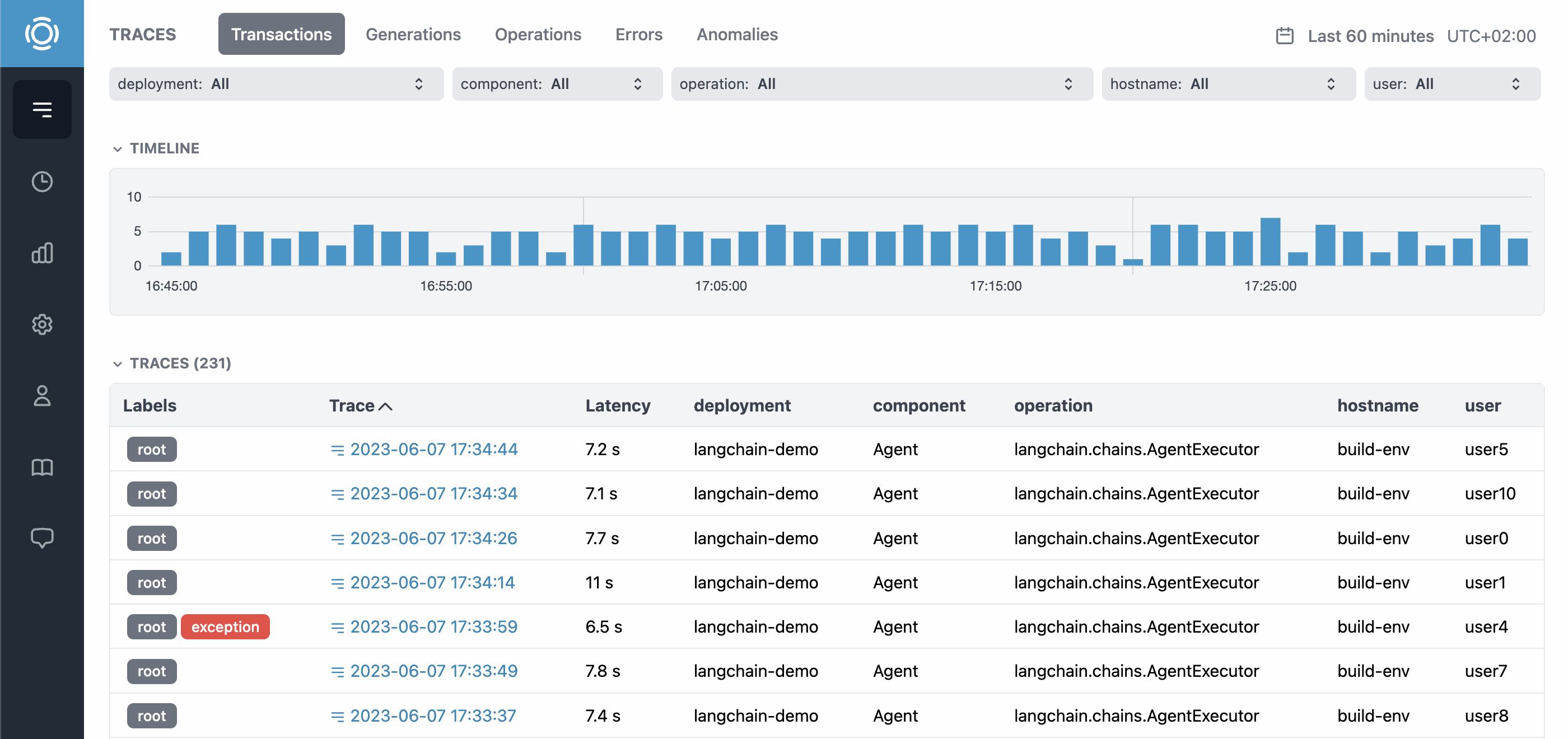Graphsignal Agent
Project description
Graphsignal: Inference Monitoring and Profiling
Graphsignal is an AI observability platform. It allows ML engineers and MLOps teams to:
- Monitor, troubleshoot and optimize AI applications by analyzing performance, data and errors.
- Start measuring and profiling server applications and batch jobs automatically by adding a few lines of code.
- Use Graphsignal in local, remote or cloud environment without installing any additional software or opening inbound ports.
- Keep data private; no code or data is sent to Graphsignal cloud, only statistics and metadata.
Learn more at graphsignal.com.
Install
Install Graphsignal agent by running:
pip install graphsignal
Or clone and install the GitHub repository:
git clone https://github.com/graphsignal/graphsignal.git
python setup.py install
Configure
Configure Graphsignal agent by specifying your API key directly or via GRAPHSIGNAL_API_KEY environment variable.
import graphsignal
graphsignal.configure(api_key='my-api-key')
To get an API key, sign up for a free account at graphsignal.com. The key can then be found in your account's Settings / API Keys page.
Integrate
Use the following examples to integrate Graphsignal agent into your machine learning application. See integration documentation and API reference for full reference.
Graphsignal agent is optimized for production. All executions wrapped with span method will be measured, but only a few will be traced and profiled to ensure low overhead.
Tracing
To measure and trace executions, wrap the code with span method.
with graphsignal.tracer().span(endpoint='predict'):
# function call or code segment
Other integrations are available as well. See integration documentation for more information.
Profiling
Enable/disable various code profilers depending on the code and model runtime by passing with_profiler argument to tracer() method. By default with_profiler is True and Python profiler is enabled. Set to False to disable profiling.
with graphsignal.tracer(with_profiler='pytorch').span(endpoint='predict'):
# function call or code segment
The following values are currently supported: True (or python), tensorflow, pytorch, jax, onnxruntime. See integration documentation for more information on each profiler.
Exception tracking
When with context manager is used with span method, exceptions are automatically recorded. For other cases, use TraceSpan.set_exception method.
Data monitoring
To track data metrics and record data profiles, TraceSpan.set_data method can be used.
with graphsignal.tracer().span(endpoint='predict') as span:
span.set_data('input', input_data)
The following data types are currently supported: list, dict, set, tuple, str, bytes, numpy.ndarray, tensorflow.Tensor, torch.Tensor.
No raw data is recorded by the agent, only statistics such as size, shape or number of missing values.
Observe
After everything is setup, log in to Graphsignal to monitor and analyze execution performance and monitor for issues.
Examples
Model serving
import graphsignal
graphsignal.configure(api_key='my-api-key')
...
def predict(x):
with graphsignal.tracer().span(endpoint='predict-prod'):
return model(x)
Batch job
import graphsignal
graphsignal.configure(api_key='my-api-key')
....
for x in data:
with graphsignal.tracer().span(endpoint='predict', tags=dict(job_id='job1')):
preds = model(x)
More integration examples are available in examples repo.
Overhead
Although profiling may add some overhead to applications, Graphsignal only profiles certain executions, automatically limiting the overhead.
Security and Privacy
Graphsignal agent can only open outbound connections to agent-api.graphsignal.com and send data, no inbound connections or commands are possible.
No code or data is sent to Graphsignal cloud, only statistics and metadata.
Troubleshooting
To enable debug logging, add debug_mode=True to configure(). If the debug log doesn't give you any hints on how to fix a problem, please report it to our support team via your account.
In case of connection issues, please make sure outgoing connections to https://agent-api.graphsignal.com are allowed.
For GPU profiling, if libcupti agent is failing to load, make sure the NVIDIA® CUDA® Profiling Tools Interface (CUPTI) is installed by running:
/sbin/ldconfig -p | grep libcupti
Project details
Release history Release notifications | RSS feed
Download files
Download the file for your platform. If you're not sure which to choose, learn more about installing packages.















